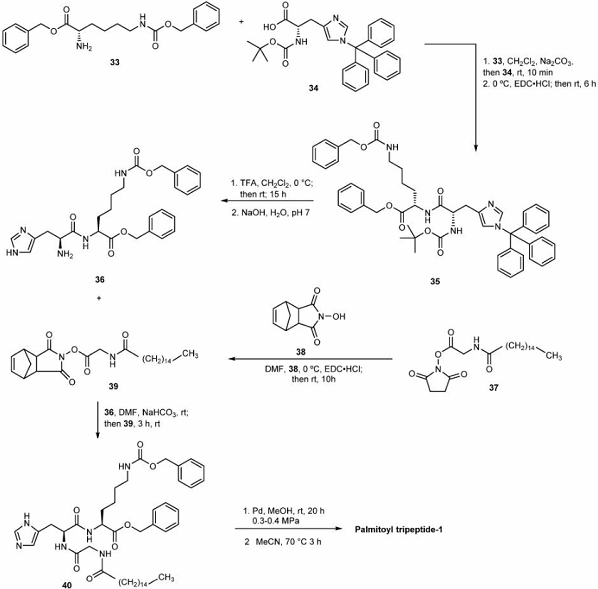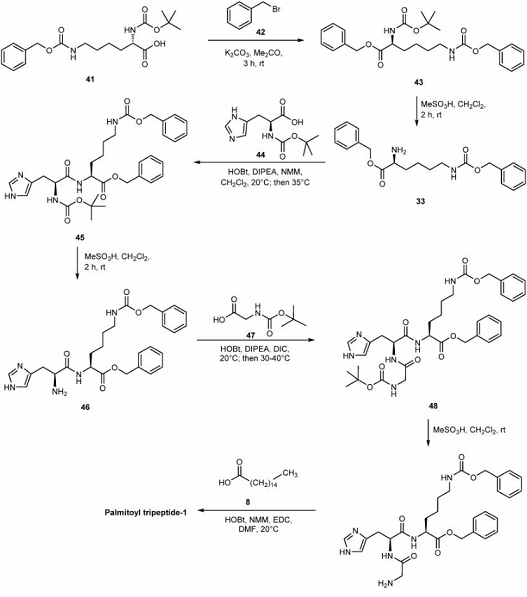 |
Palmitoyl Oligopeptide underwent a name change in 2013 to distinguish between two distinct molecules developed in 1994. The compounds were renamed as palmitoyl tripeptide-1 (Pal-GHK) and palmitoyl hexapeptide-12 (Pal-KTTKS) to clarify cosmetic product compositions. Palmitoyl tripeptide-1 is a synthetic fatty acid-linked peptide that aids in repairing visible skin damage and strengthening the skin's supportive elements. It acts as a "signal peptide" by instructing the skin to improve its appearance, particularly in reducing signs of sun damage like wrinkles and rough texture.

Palmitoyl tripeptide-1 consists of the sequence N-(1-oxohexadecyl)glycyl-L-histidyl-L-lysine. Various methodologies have been reported for synthesizing this tripeptide, including EDC-mediated coupling and solid-phase approaches.

The synthesis of palmitoyl tripeptide-1 involves protecting the carboxylic moiety of Boc-Lys-(Z)-OH, coupling with Boc-His-OH, deprotection/coupling with Boc-Gly-OH, palmitoylation with palmitic acid, and final deprotection of the carboxylic moiety.
[1] Diana I S P Resende. “Usage of Synthetic Peptides in Cosmetics for Sensitive Skin.” Pharmaceuticals (2021).
 |